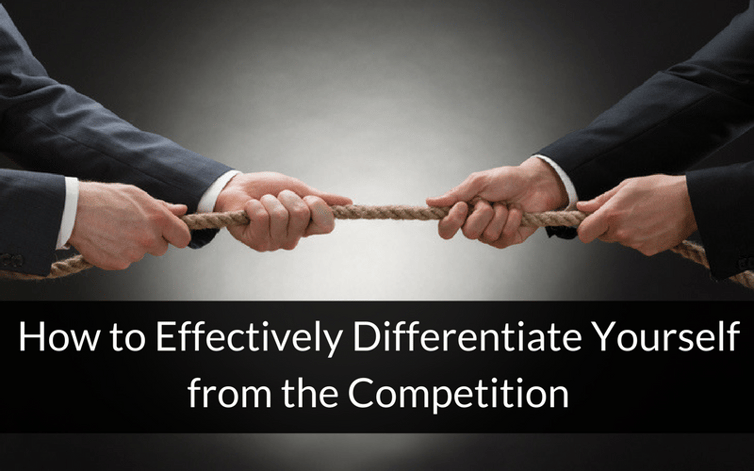
What is it about your offering that makes it stand out from the pack? What do you bring to the table that makes your product or service of unique value to your buyer?
It’s your differentiator.
Differentiation of your product from everyone else’s is the gateway to getting your product or service noticed and remembered. Your differentiator is the unmatched aspect of your solution that delivers value to buyers.
Who decides what differentiates two offerings? The buyer.
Differentiation Occurs in the Mind of the Buyer
You have an important role in shaping the differentiation of your offering. The buyer might think he or she knows what the problem is and what solution will resolve it. The reality is the buyer is often wrong on both counts.
It’s your job to help the buyer define the size and scope of the problem. And it’s your job to show the buyer how your solution uniquely resolves the problem. Only then will the buyer see how your solution is different than the alternatives.
So how do you differentiate yourself? Well, you can drive differentiation by following these three steps:
- Gain a deep understanding of your target customer’s problems and requirements.
- Review your full product offering and understand the total value delivered.
- Define your price within the total value you deliver and the buyer’s next best alternative.
Know Your Ideal Buyer
Invest in comprehensive customer research to build a buyer persona for each segment of your audience. Identify the goals and likely needs of each persona and the problems keeping them from reaching those goals. Calculate the cost of missing the goals to provide further motivation to change the status quo.
Emphasize Value Over Price
Value is not communicated through your solution’s features and benefits alone. It’s just a place to start. You need to find more factors that add to the total value perception, which can include:
- Service aspects such as customer support
- Payment terms and freight
- Maintenance contracts
Be Specific About Your Differentiators
Don’t just say your people set you apart; why do they set you apart? Perhaps they have specialized knowledge your competitors don’t. Or maybe your people have experience similar to that of your buyers’. Tell buyers how this is going to help them.
Are you showcasing your service model and processes? Illustrate why it’s so great by describing your specific process for onboarding a new customer and how that makes your solution more effective in the space.
Go beyond technical knowledge and provide domain knowledge because it includes not just your people but your institutional know-how. You can show your company has the proven ability to address issues specific to your buyer’s industry or product.
Prepare Your Sales Force
Sales representatives need to clearly understand your buyer's goals, needs, and issues. They must also be skilled in best practices and diagnostics to determine how your capabilities and offerings are of value to each buyer.
Total Cost of Ownership (TCO) is a powerful method of comparing your solution to a competitor’s. It takes into account the features and benefits of your solution and also the relative value you bring to the table through:
- Price
- Cost to deploy and maintain
- Cost reductions in other areas
- Increases in buyer revenue
Effectively differentiating yourself from the competition rests on more than your brand or your features and benefits. Differentiation is what the buyer says it is. It’s up to you to help frame that differentiation by making the buyer fully aware of the extent of their problem and how your solution is uniquely qualified to solve said problem.
Conclusion
Ultimately, it’s important to emphasize value over price by highlighting your solution’s specific capabilities in service, manufacturing, training, or labor savings. Also focus on training your sales teams in the proper use of the concept of total cost of ownership for comparing your product against another.
Commoditization has run rampant over many products and services in the marketplace. You must find and leverage what differentiates your offering from the rest.









